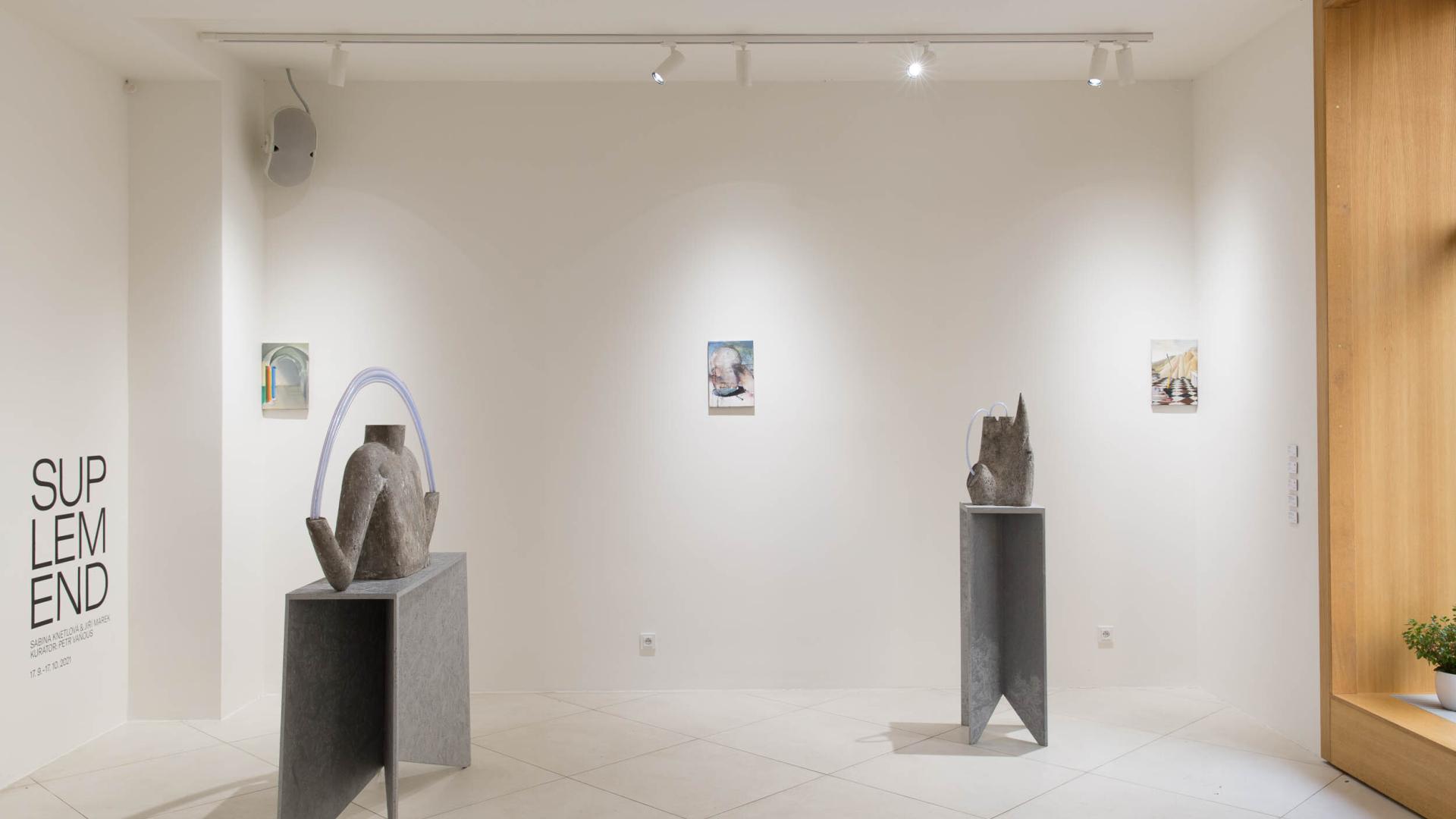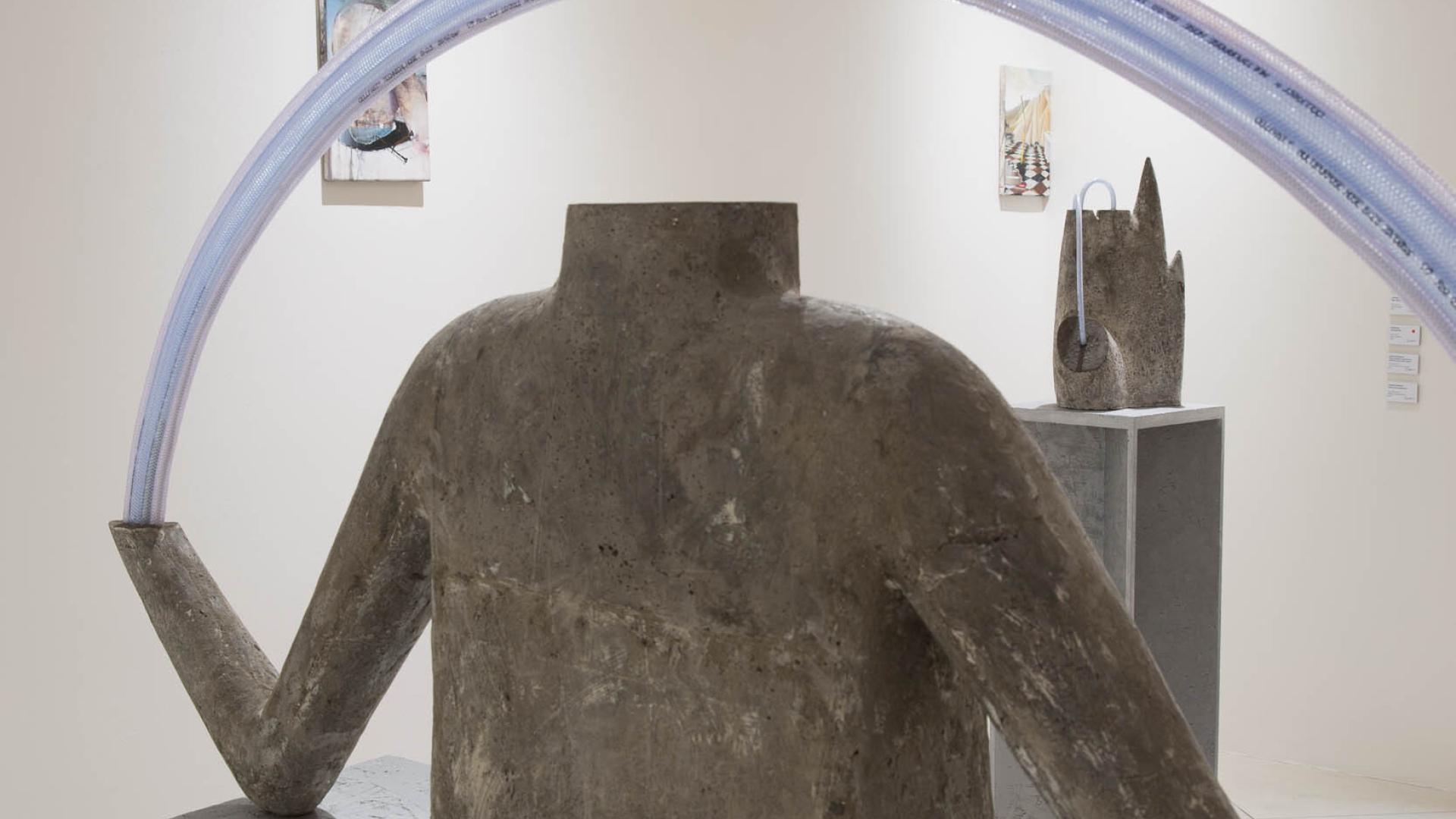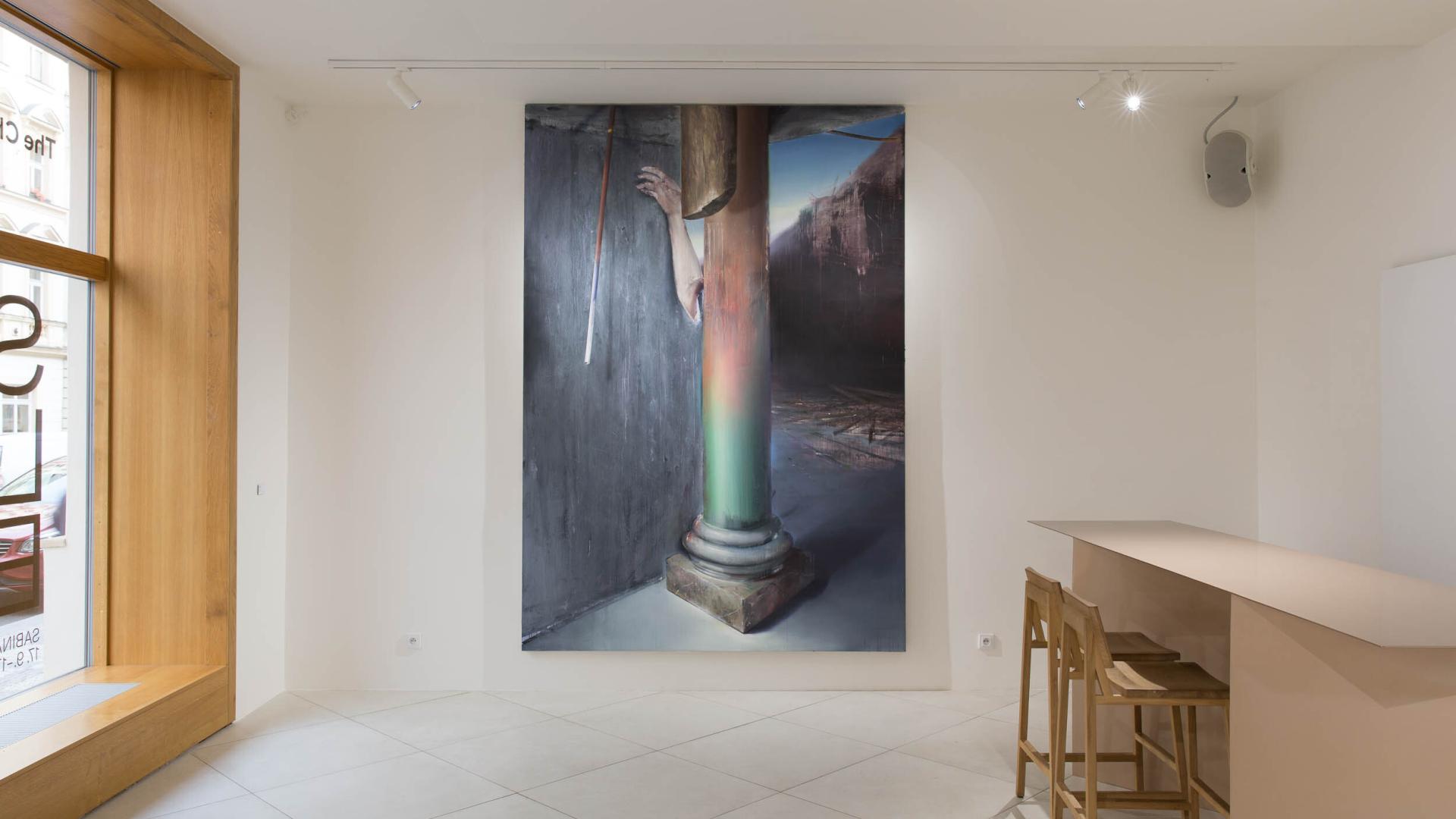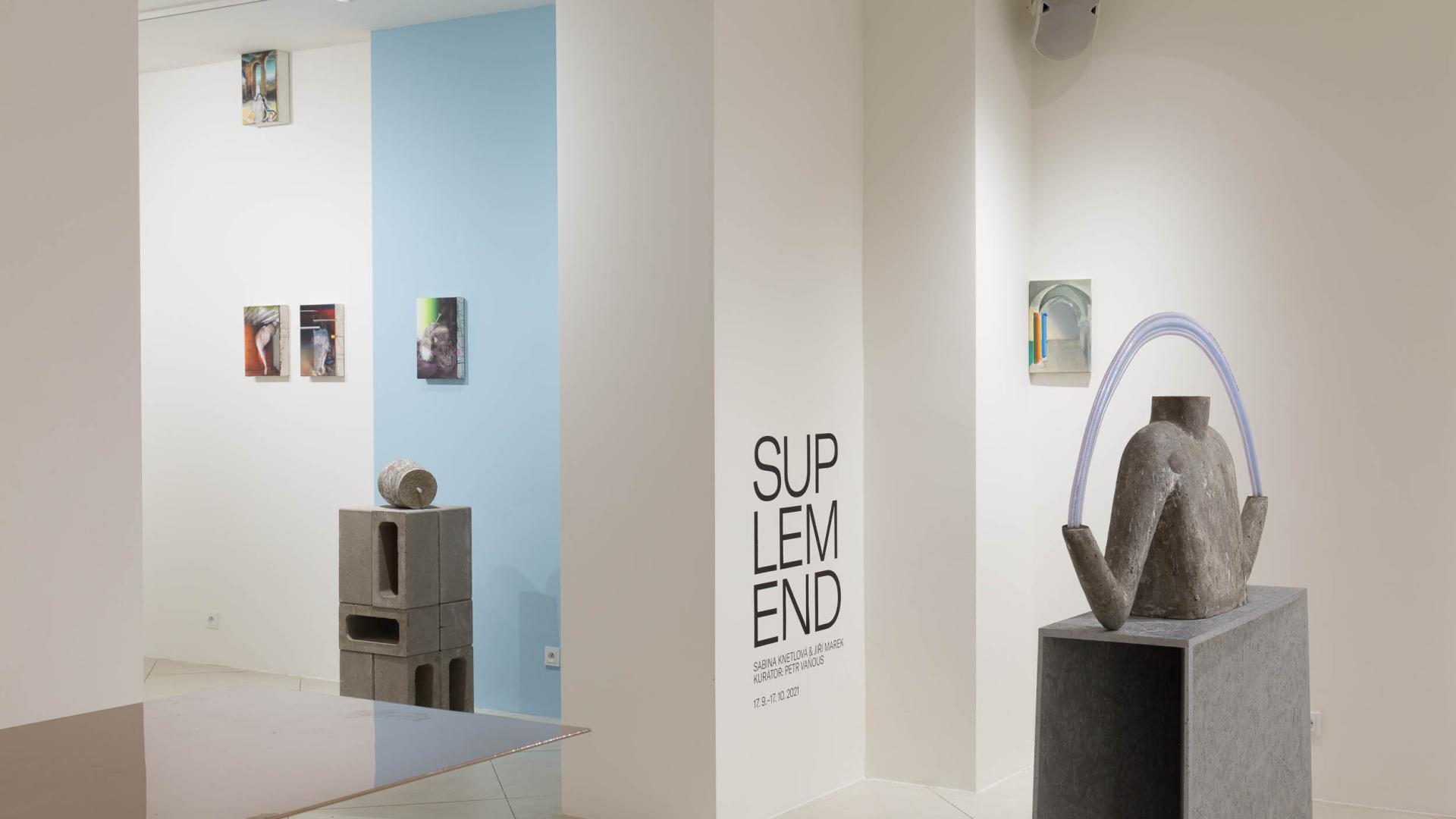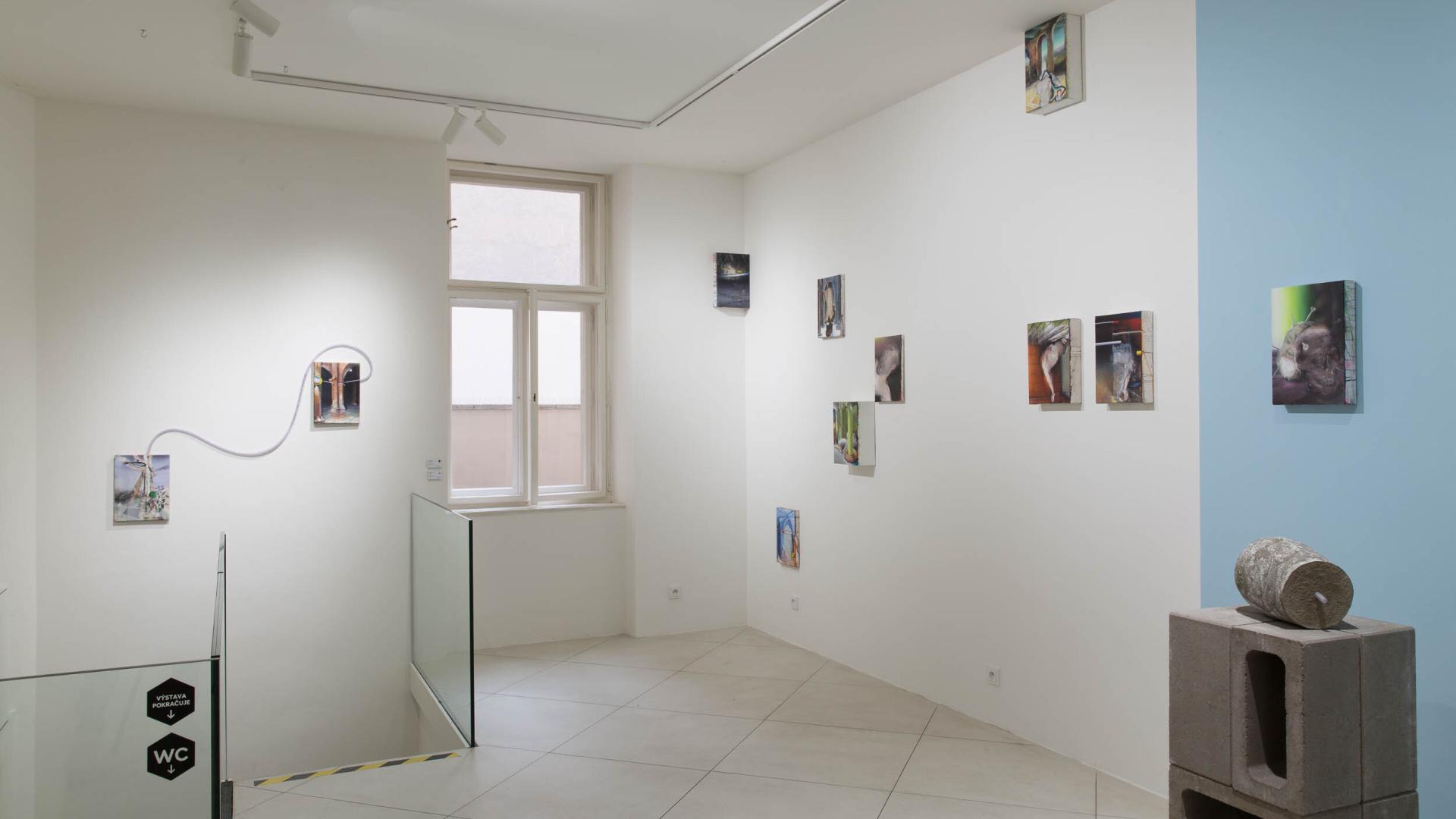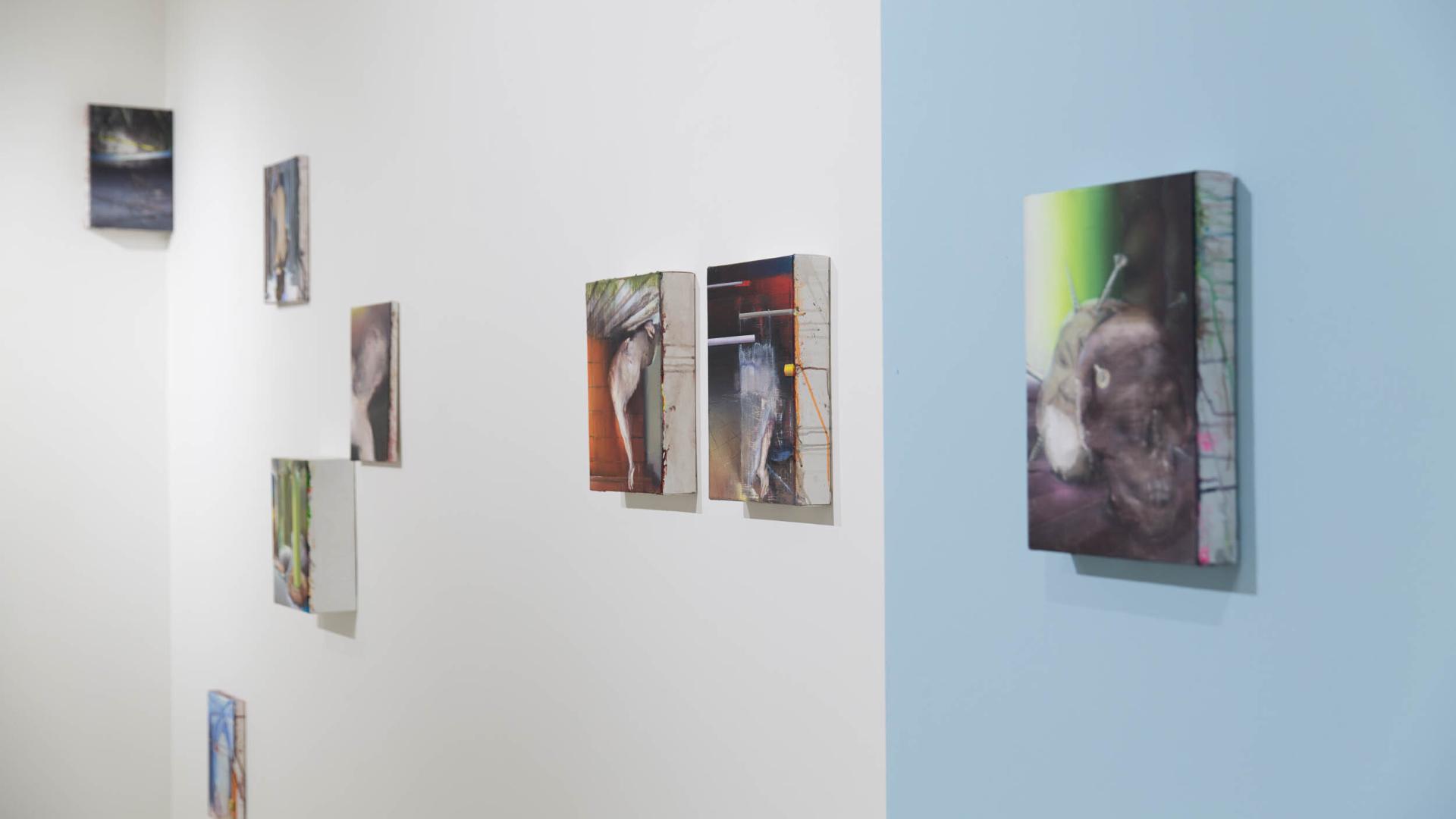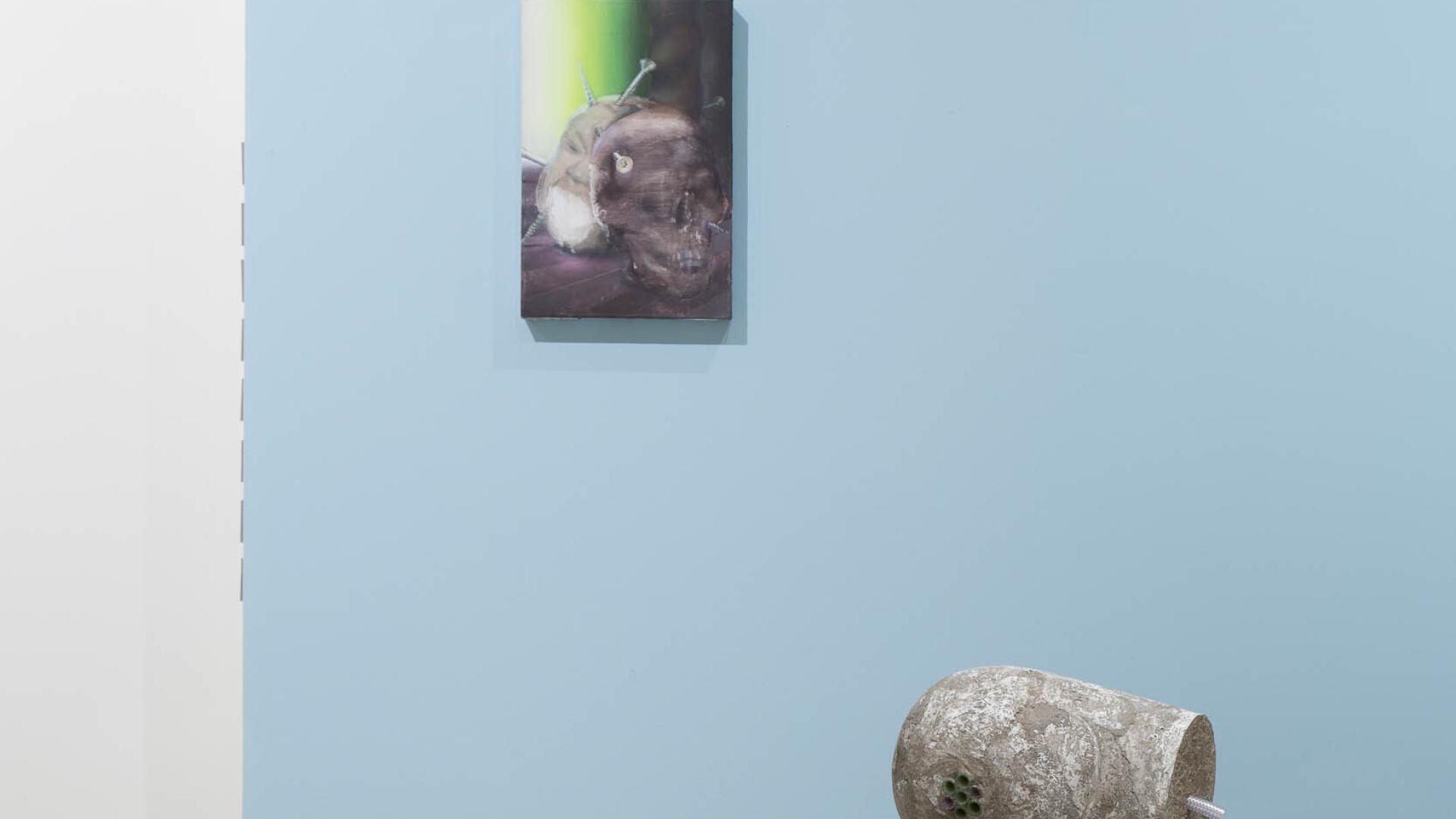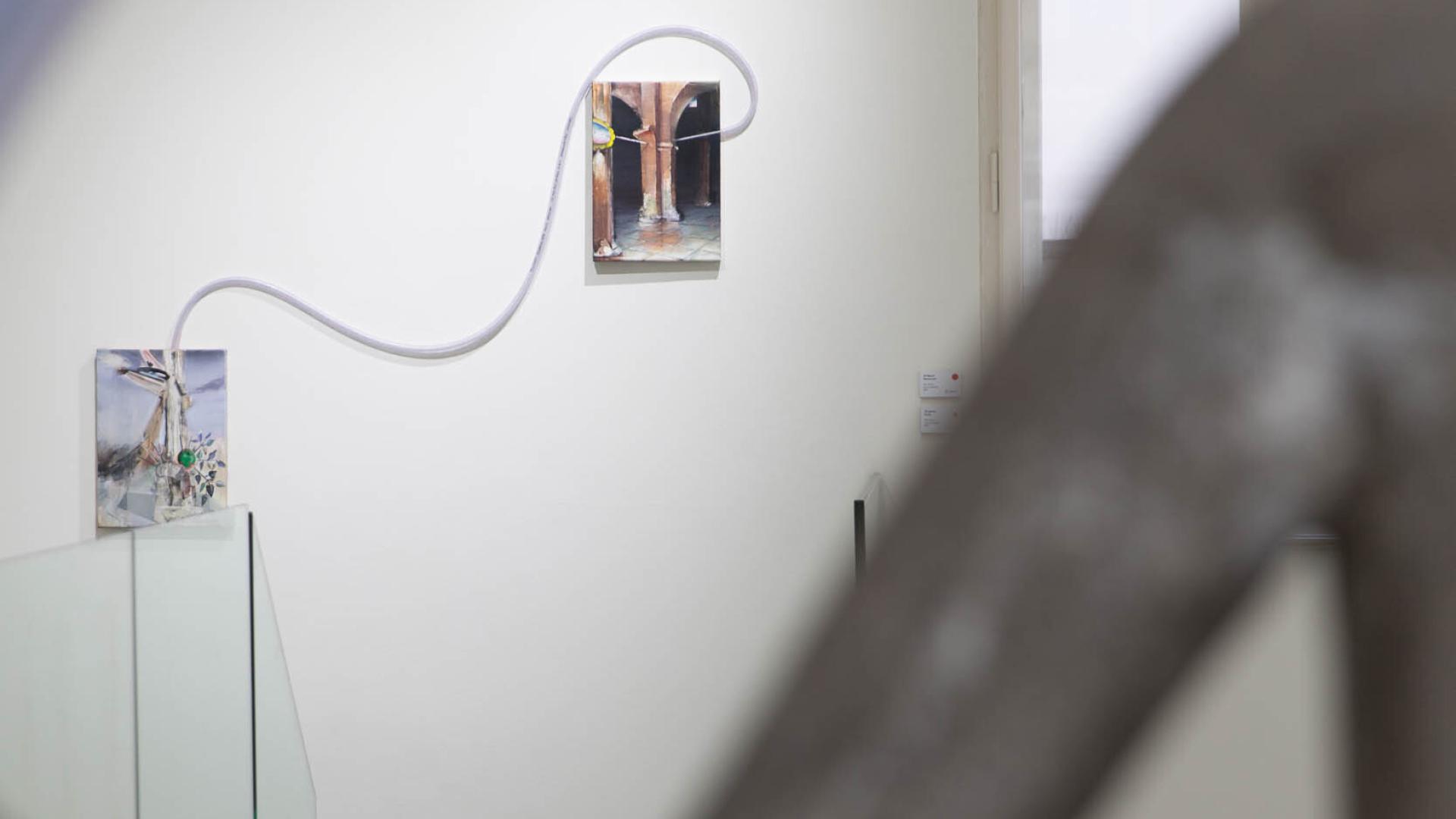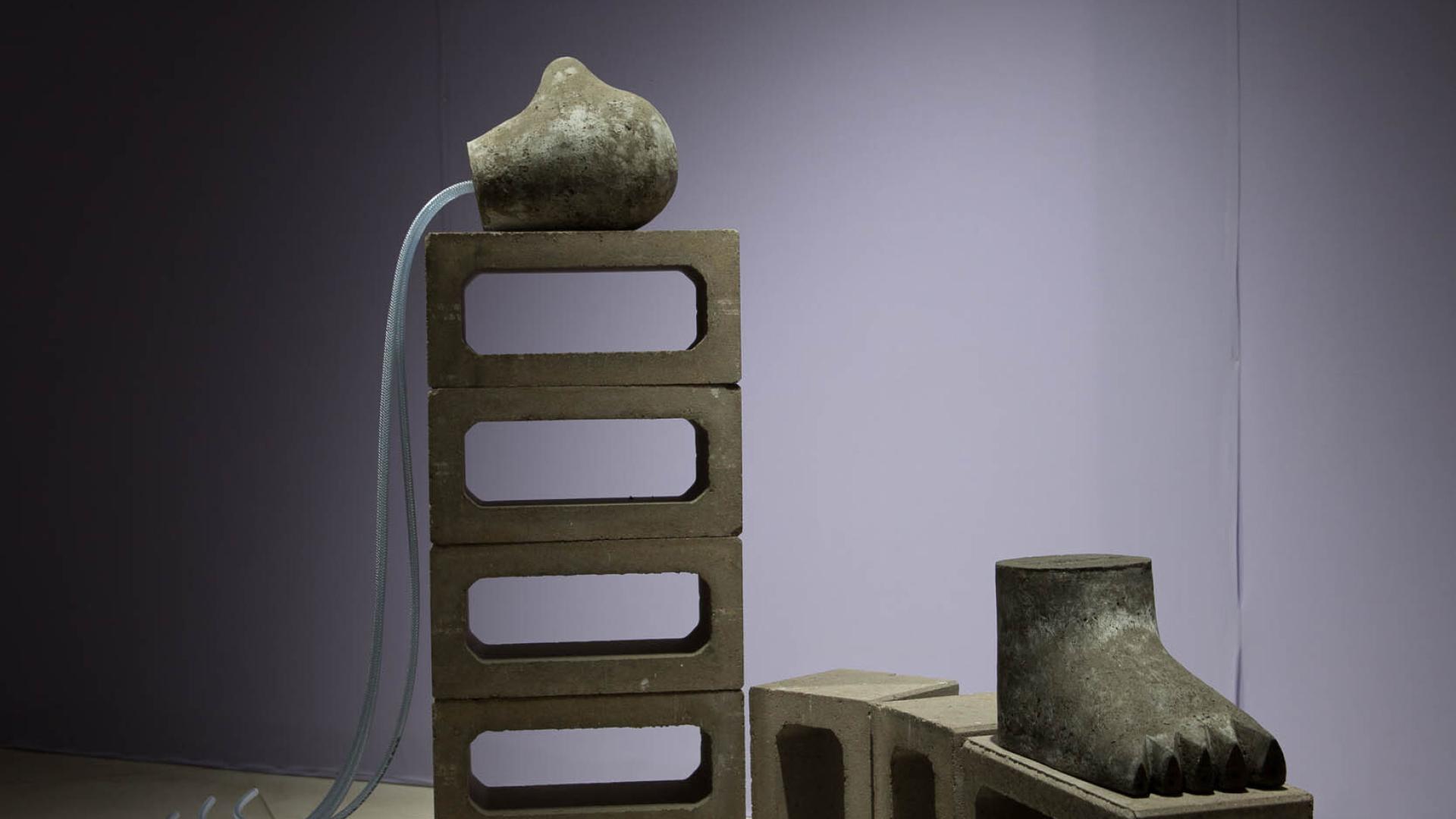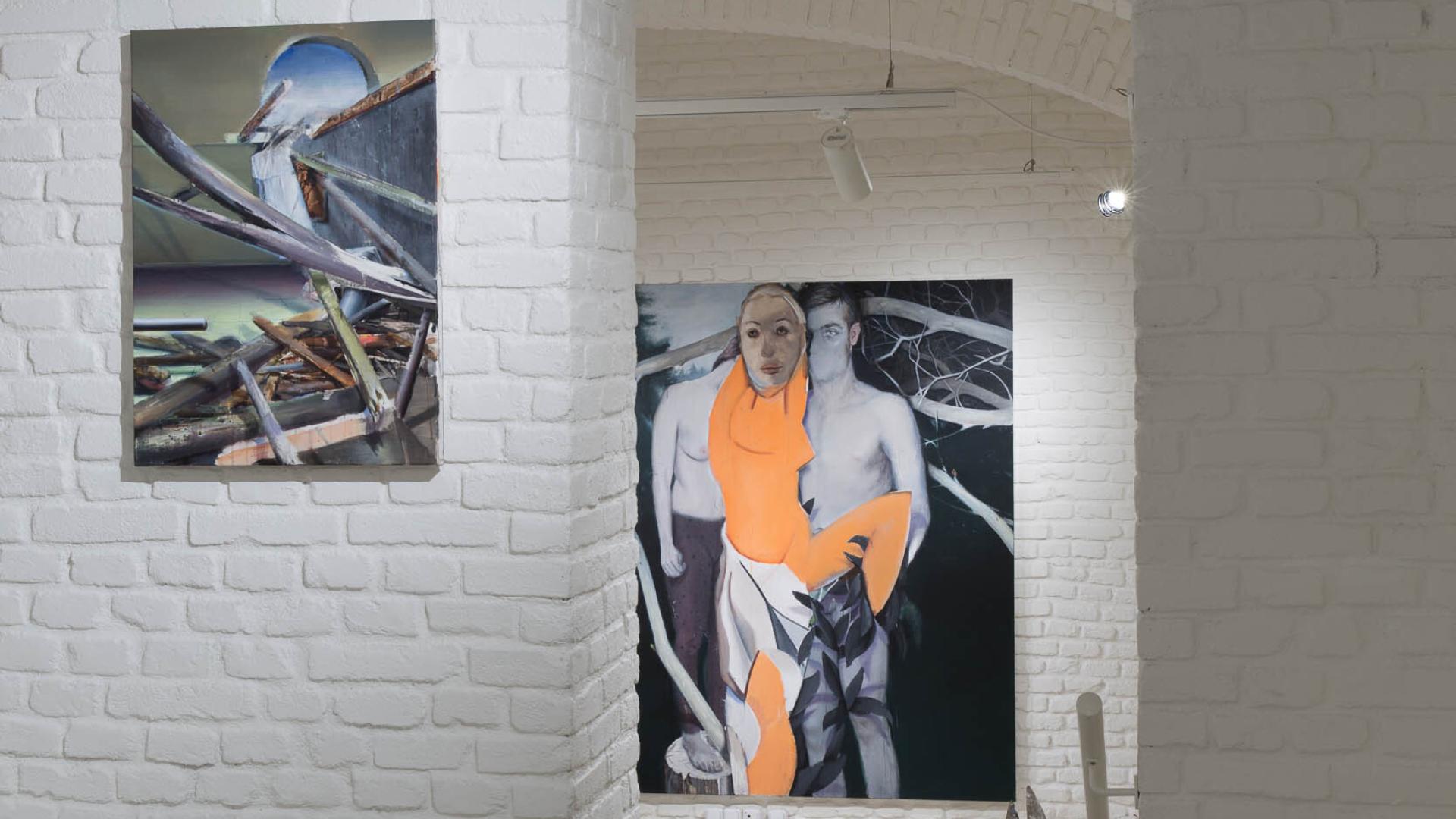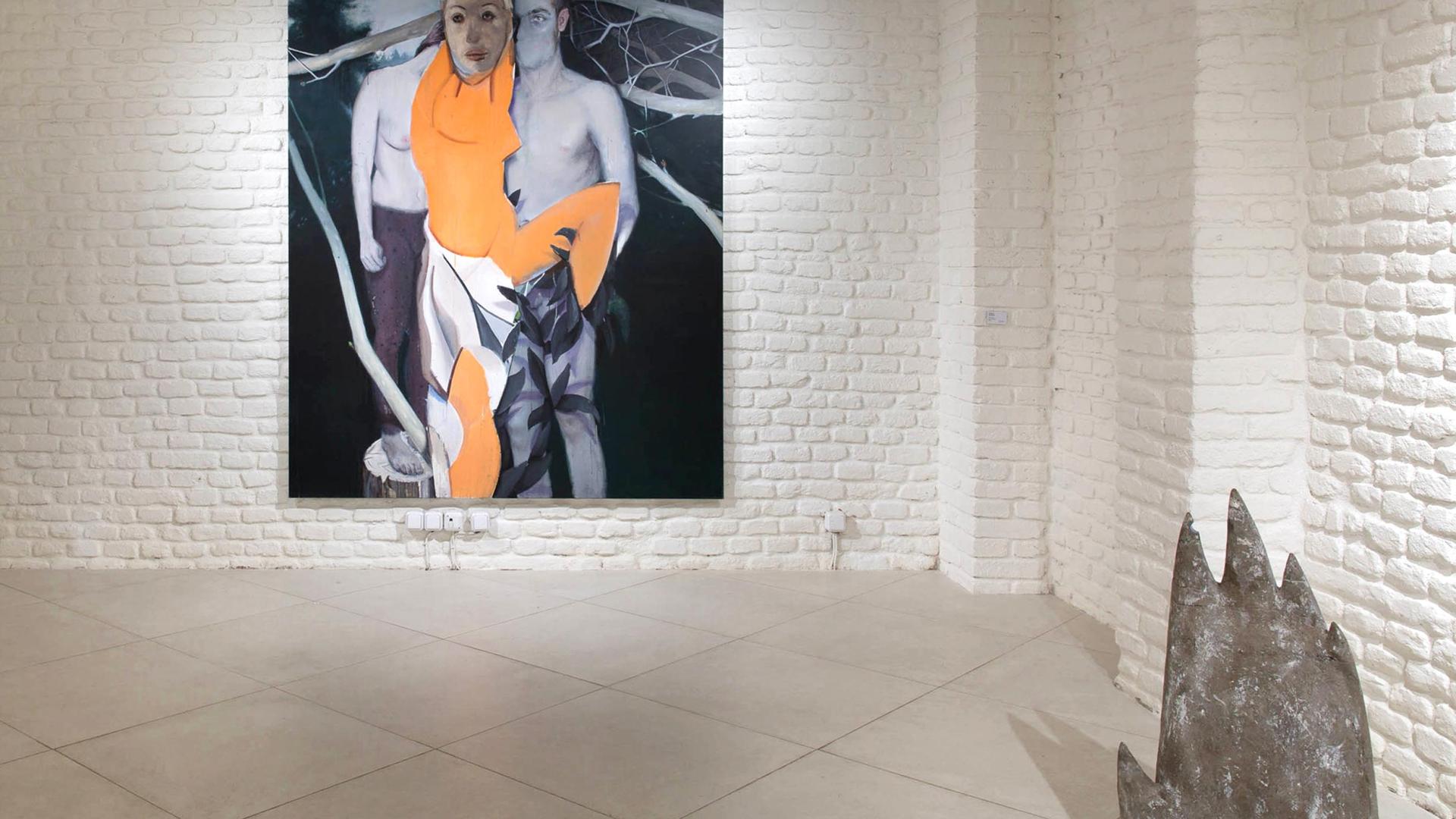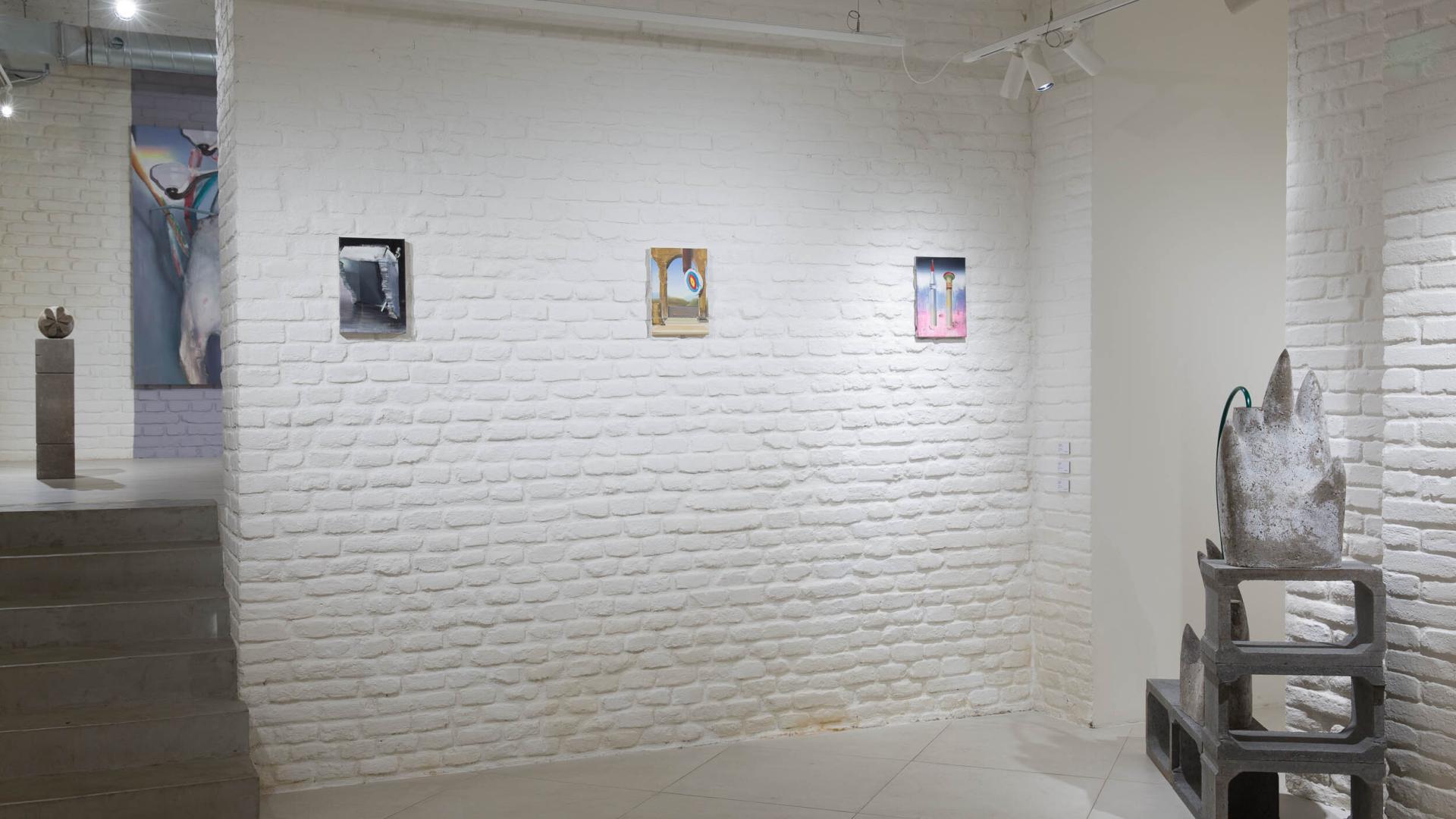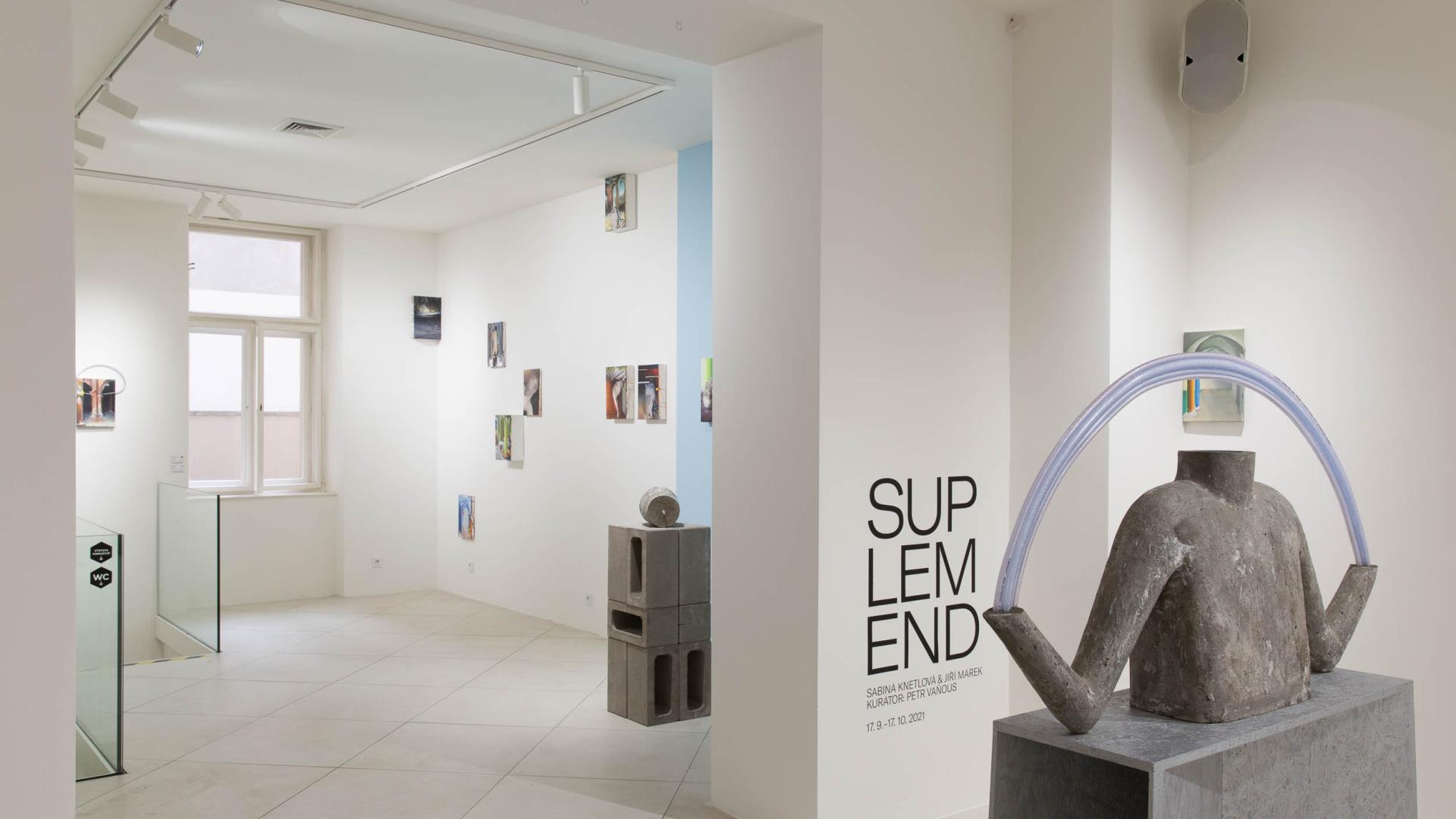
SUP LEM END (with Sabina Knetlová)
—
The Chemistry Gallery, Prague, CZ
Solo exhibition
Curator: Petr Vaňous
The exhibition of Jiří Marek and Sabina Knetlová represents an important probe into the specific generational sensitivity that is behind the transformation of the language of painting and sculpture. The prevailing here is both an expressive return to narration, which is a changed, updated way of „narration“, and the need to physically realize, materialize their visions in a particular material, ie the need to create artifacts that naturally integrate as objects into a common living space. This aspect of creation responds to “the unbearable lightness of being” in the time of the so-called post-media and post-internet situation, where a substantial part of cultural and social sharing takes place through intangible data, and where movement, constant change and acceleration of pace prevail. In both authors, a moment of concentration and calming is formed against the speed of change, an act of human presence is formed against the ephemeral flow of data, and an area of deep subliminal instincts is created against the alienating stream of operative consciousness.
Sabina Knetlová‘s concrete sculptures are created using traditional sculptural techniques, but they go from descriptive to stylistic principles, which should primarily affect the situation of the figure. It is essential to link it with the space, to which it usually actively responds, and thus it becomes a part of it precisely as a mover of a specifically played narrative. The author experiments with contrasts of plastic forms. The basic material is concrete pressed into plaster molds, the surface of which it leaves raw open after removing the hull. The flexibility of rubber hoses or the austerity of prefabricated buildings oppose it. The combination of these forms creates an internal compositional tension of the work. At the same time, there is a „thematized“ civilizational contrast between sculptural modeling of shape and industrially produced elements, ie the moment that is the interface of human presence as a gesture and human presence as an act of serial industrial production.
In his last painting phase, Jiří Marek enters the iconographic frameworks of the past. The existing prototypes of established narrative schemes serve him as a liberating platform for ways of retelling, for updating and modifying the generational feeling set in the scenes of the apparent past, which, however, becomes ambiguous, questionable and ghostly in the process of authorial transformation. Visually „familiar“, despite its transparency, is alienated in value. The smoothness of the narration is disconnected. Associations are rather subliminal allusions to the historical context, the real essence of which in the author‘s paintings are the discoveries of hitherto overlooked interspaces, nooks and creases, which can be newly used. Something seemingly archaic is being radicalized here in order to undermine the certainty of the „overcome“ and to re-present human destiny in its recurring nudity and Heidegger‘s throw.
The title of the SUP LEM END exhibition is an ironic anagram of the word „supplement“ denoting something substitute that balances the dissatisfaction or imperfection of the present state. As if shared collective values had to be re-established on solid foundations, for which an intuitive form derived from personal, individual authorial research was sought. Skepticism acts here as a vital force renewing proven resources stored in art history. However, it is the same skepticism that bends and reshapes these resources as needed to reopen the space for a strong generational statement.
Výstava Jiřího Marka a Sabiny Knetlové představuje důležitou sondu do specifické generační citlivosti, která stojí za proměnou malířského a sochařského jazyka. Převládající je tu jak výrazový návrat k naraci, jenž je však pozměněným, aktualizovaným způsobem „vyprávění“, tak potřeba fyzicky realizovat, zhmotňovat své vize v konkrétním materiálu, tedy potřeba vytvářet artefakty, jež se přirozeně včleňují, jako předměty, do společného životního prostoru. Tento aspekt tvorby reaguje na „nesnesitelnou lehkost bytí” v době tzv. postmediální a postinternetové situace, kde se podstatná část kulturního a společenského sdílení odehrává prostřednictvím nehmotných dat, a kde převládá pohyb, neustálá změna a zrychlení životního tempa. Proti rychlosti změn se u obou autorů formuje moment koncentrace a zklidnění, proti efemérnímu plynutí dat akt lidské přítomnosti a proti odcizujícímu proudu operativního vědomí oblast hlubinných podprahových instinktů
.
Betonové sochy Sabiny Knetlové vznikají tradičními sochařskými postupy, směřují však od popisnosti ke stylizačním principům, které mají postihnout především situovanost figury. Podstatné je její provázání s prostorem, na který zpravidla aktivně reaguje a tím se stává jeho součástí právě jako hybatel konkrétně rozehraného narativu. Autorka experimentuje s kontrasty plastických forem. Základním materiálem je jí beton vtlačovaný do sádrových forem, jehož povrch po odstranění kadlubu nechává syrově otevřený. Proti němu staví pružnost gumových hadic nebo strohost stavebních prefabrikátů. Kombinací těchto forem vzniká vnitřní kompoziční napětí díla. Zároveň je tu „tematizován“ i civilizační kontrast mezi sochařskou modelací tvaru a průmyslově vyráběnými elementy, tedy právě moment, který je rozhraním lidské přítomnosti jako gesta a lidské přítomnosti jako aktu sériové průmyslové výroby.
Jiří Marek ve své poslední malířské fázi vstupuje do ikonografických rámců minulosti. Existující předobrazy ustálených vyprávěcích schémat mu slouží jako osvobozující platforma pro způsoby vlastního převyprávění, pro aktualizaci a modifikaci generačního pocitu usazeného do kulis zdánlivé minulosti, která však procesem autorské transformace nabývá na nejednoznačnosti, zpochybnění a přízračnosti. Vizuálně „známé“ se přes svou transparentnost hodnotově odcizuje. Plynulost narace je rozpojována. Asociace jsou spíše podprahovými aluzemi na historický kontext, jehož skutečnou podstatou jsou v obrazech autora objevy dosud přehlížených meziprostorů, zákoutí a záhybů, které lze nově využít. Cosi zdánlivě archaického se tu radikalizuje, aby byla podlomena jistota z „překonaného“ a aby tu byl opět zpřítomněn lidský osud v jeho opakující se nahotě a heideggerovské vrženosti.
Název výstavy SUP LEM END je ironickou přesmyčkou slova „suplement“ označujícího cosi náhradního, co vyrovnává nespokojenost či nedokonalost přítomného stavu. Jako by sdílené kolektivní hodnoty bylo nutné znovu založit na pevných základech, pro které se hledá intuitivní podoba odvozená z osobního, individuálního autorského průzkumu. Skepse tu působí jako vitální síla obnovující prověřené zdroje uložené v dějinách umění. Je to však ta samá skepse, která tyto zdroje podle potřeby ohýbá a přetváří, aby znovu rozevřela prostor pro silnou generační výpověď.
